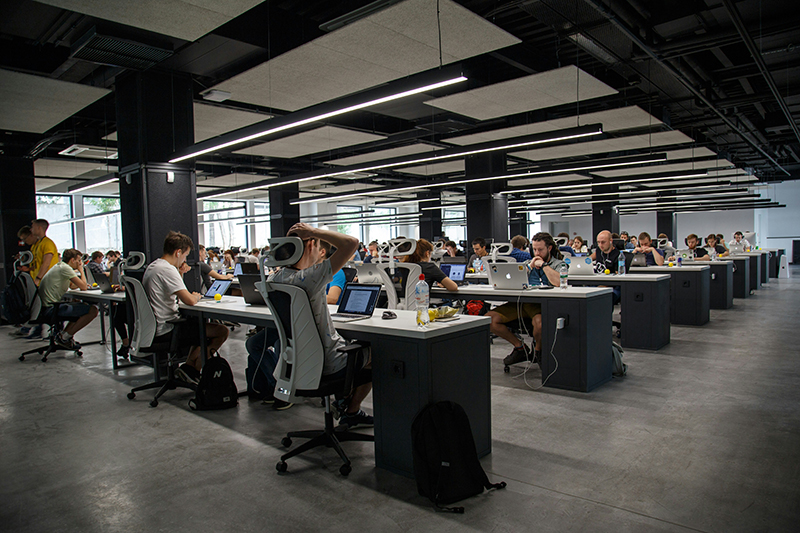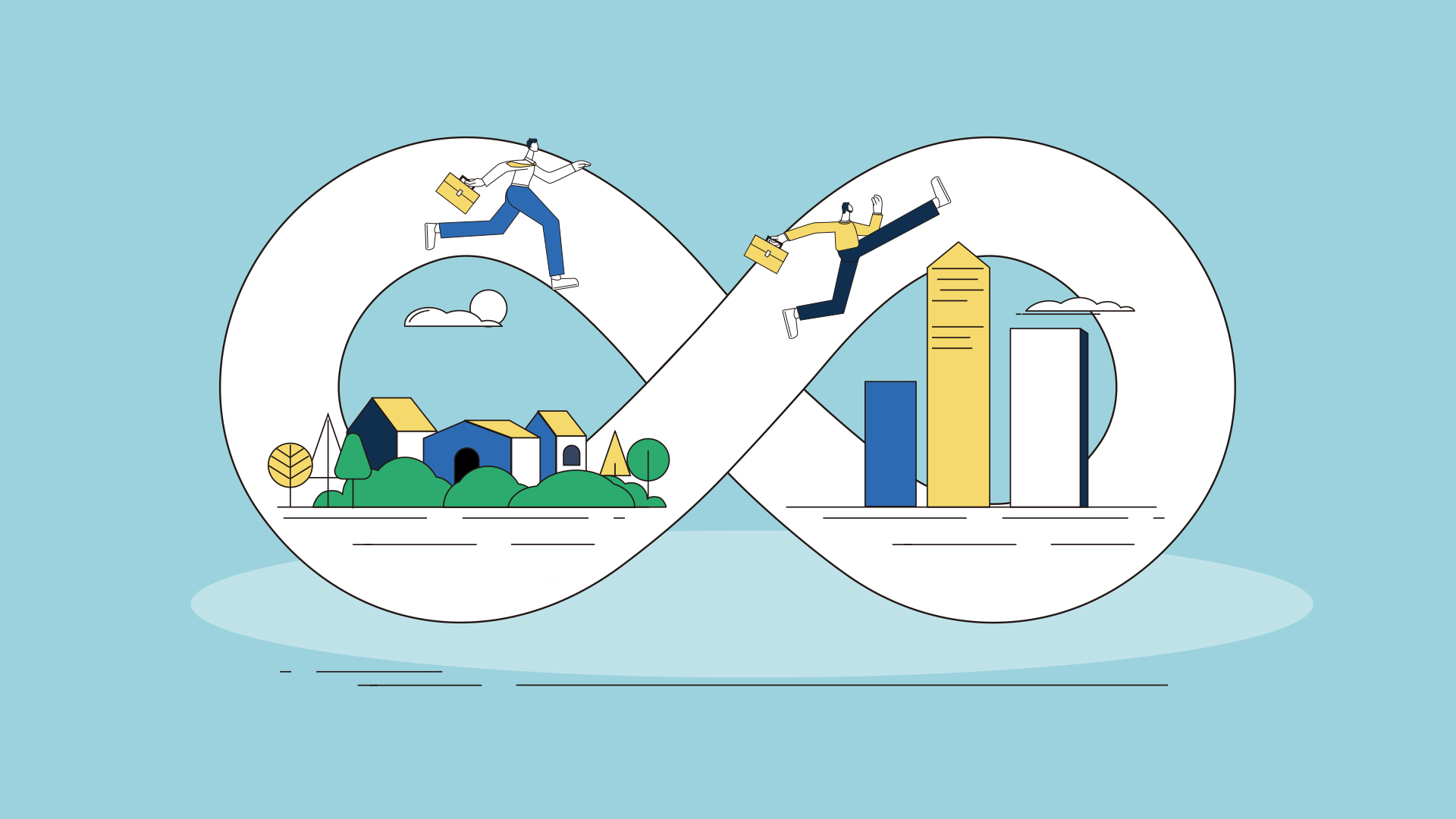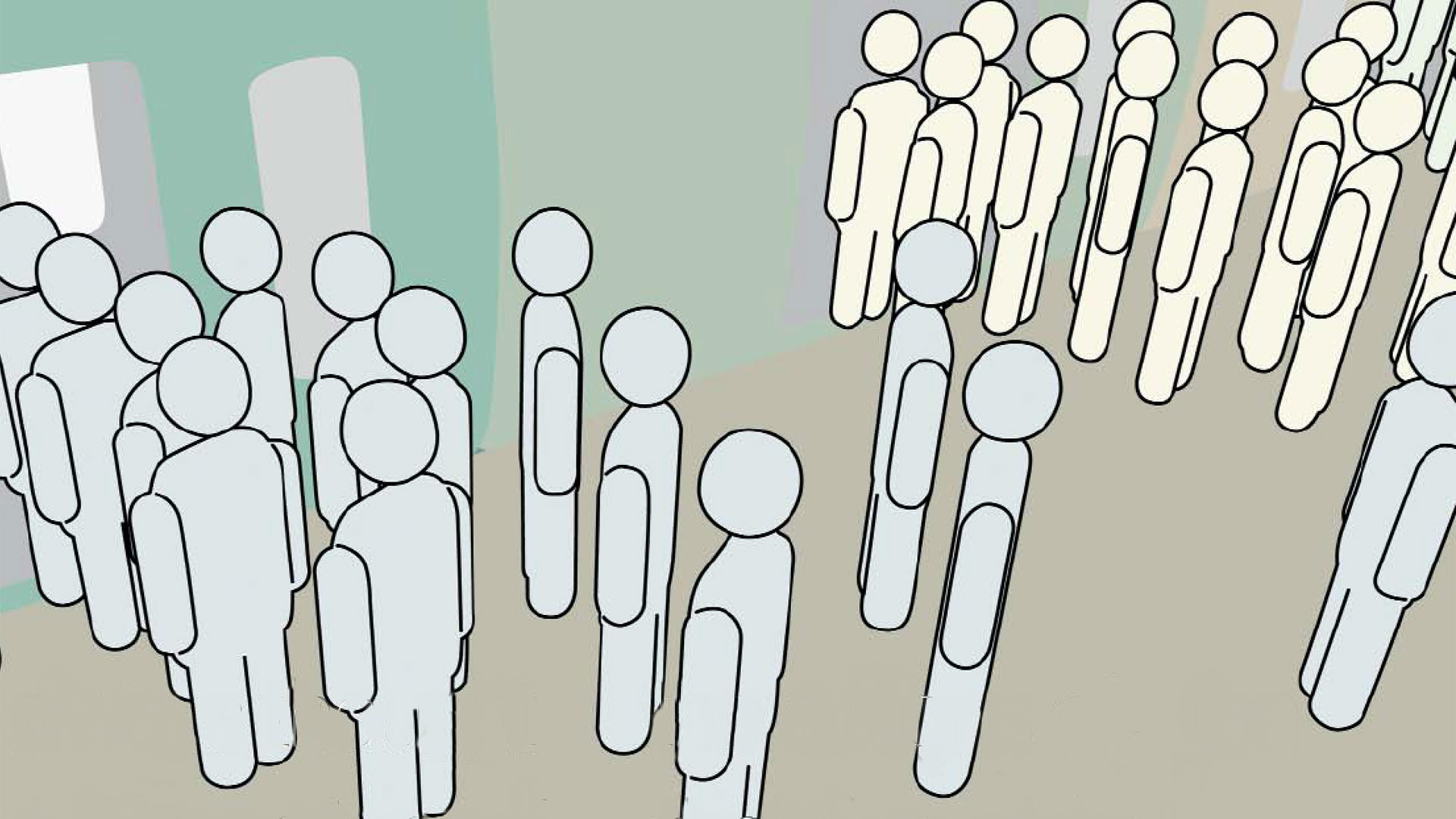The Pandemic Epiphany
How the COVID-19 pandemic can help us reevaluate our approach to work-life balance.
Work-life balance has been the subject of a decades-long debate. But when going to work meant putting our lives at risk, we began to reevaluate how work fits into our lives.
During the throes of the global COVID-19 pandemic, work-life balance was given a whole new meaning. Suddenly, most people found themselves working from home, working on-site at risk of exposure, or unable to work at all. Initially, when uncertainty was highest, quitting plummeted. But then we saw The Great Resignation, or perhaps more aptly, The Great Reshuffle: Most people who quit did not exit the workforce altogether but left for a better position.
Anthony Klotz, an associate professor of organizational behavior at University College London, is credited with predicting and coining the term “The Great Resignation.” He suggests that one of the reasons people left their jobs was because of a pandemic-related epiphany. Essentially, he says, the disruption of normal circumstances spurred us to reevaluate how work fits into our lives.
When going to work put us at risk for a life-altering health challenge, our perspective started to shift. The fragility of life—and the fragility of our economic system—called into question whether our lives were in line with our priorities. When something like this happens, it may lead us to ask questions like: How valuable is my time really? Is my salary truly a fair exchange for the valuable resource I am giving to my job—my time? Is my salary worth the risk, stress or demands that come with it? It’s not surprising that this novel situation prompted some dramatic shifts in employment and another look at the concept of work-life balance.
Work-life balance has been discussed for decades; however, it’s still ill-defined. In the United States, a common, albeit vague, definition is to “have enough time for a work life and have enough time for a personal life.” The phrase suggests that if we have this in perfect balance, we can be content in both our professional and personal lives. But what do we mean by “enough”? Is it enough to be home for dinner once a week? Or to have weekends off? What constitutes a “personal life”? Does it include friendships? If so, how many? What about a family?
Who Holds the Power?
A lot of literature on the subject suggests that both the employer and the employee have obligations to fulfill in achieving work-life balance. However, employers have distinct leverage over employees in that they have ultimate control over resources. In a strict capitalist system, the goal of the employer is to maximize production and thereby maximize profit. These principles inherently conflict with any idea of balance or encouraging time to develop personal relationships outside the office.
It’s easy to see how employers can end up exploiting their workforce. Oppression of workers is an age-old problem, with employers often wanting to extract the maximum time and productive energy from their workers for minimum wages. According to the World History Encyclopedia, the first recorded labor strike dates back to the 12th century BCE, when artisans building the necropolis for Ramses III were delayed payment for over 18 days—not money, in this case, but food rations. This wasn’t a one-time problem: “The payment to the workers . . . was again late and then again late until, as [Egyptologist Toby] Wilkinson writes, ‘the system of paying the necropolis workers broke down altogether.’” Meanwhile, substantial resources were allocated to warring against the Sea Peoples and to Ramses III’s jubilee celebration of his 30-year reign.
Oppression by the few in power over the many has plagued humanity from the beginning. A quick glance through Wikipedia’s List of Revolutions and Rebellions yields an astounding number of uprisings over time. While many of these have complicated political and religious factors, fundamentally we see the underlying theme of oppression of the plebian, peasant, slave, serf or commoner for the gain of those in power.
Seeking to address these issues, modern labor codes in Western societies are largely born out of an overwhelming number of labor strikes in the 19th and 20th centuries calling for fair wages and an eight-hour workday. This led to the League of Nations founding the International Labour Organization (ILO) in 1919, with the goal of promoting fair labor practices. The ILO now has 187 member states.
Despite apparent progress and attempts at protecting workers from mistreatment from employers, we still see disturbing trends. In the United States, for example, the Economic Policy Institute reported that “in 2022, CEOs were paid 344 times as much as a typical worker in contrast to 1965 when they were paid 21 times as much.” Furthermore, a US Government Accountability Office study published in 2021 found that more than 40 large companies seeking bankruptcy protection in the United States during fiscal year 2020 still awarded bonuses to executives within a few months to a few days of filing their cases. This government report predictably garnered a lot of media attention.
“Over 40 million Americans have lost their jobs since the start of the Covid-19 pandemic. Meanwhile, corporate CEOs are doing just fine.”
It’s clear that many in leadership positions still struggle to provide a fair workplace environment to all workers. The lowest earners often have more difficult work conditions, including erratic schedules. Employers in most countries are not required to offer hourly or gig workers the fringe benefits that would provide stability in case of sickness or family obligations. While working hours and workplace safety laws have been established to some extent (though they’re not always guaranteed), the accessibility of fringe benefits such as paid sick leave, parental leave, vacation leave or pension options is still limited.
Employers tend to protect those at the top at the expense of those at the bottom. A workplace environment that fosters balance for all employees remains elusive.

What If Life Is Work?
Even when we are afforded the luxury of adequate personal time, it still may not mean that our life feels in balance.
When we take a look at the expression work-life balance, we typically view work as our occupation, and life covers everything else. It may be tempting to think that life is all play or rest. But life requires many different types of work: childcare, eldercare, cooking, housekeeping and maintaining relationships, to name a few. If we are inclined to the spiritual, we may also require time to pursue our spiritual work. If life pressures also require a substantial share of our executive brain functioning, then we must consider the amount of time it takes to do that work as well. After all of this, the thinking goes, we can then enjoy some rest and relaxation.
In other words, the term “work-life balance” presents the concept as though one is hard and the other easy. But again, much of what we call “life” is also a type of “work.” This type of work is often called “invisible labor.” It’s easy to dismiss or discount such work because it is typically unpaid. However, a May 2021 survey by salary.com estimates the median salary for a stay-at-home-mom should be over US$184,000 annually—no small sum. For comparison, the average annual paid salary in the United States is only about $60,000.
This is not to say that life constitutes only unpleasant work, but any given day may require a considerable amount of organization, time, energy and stress. Further, it’s inevitable that all of us will experience seasons of life that inherently exact a higher degree of emotional and physical time and stress. The various combinations of burdens, strains or reliefs we experience will greatly shape our unique view and interpretation of work-life balance during those seasons.
Cultural and Environmental Factors
If life includes a lot of work, then it would follow that we would try to limit our time at our occupation in order to fulfill all of our personal obligations. However, cultural influences can greatly affect that approach. Depending on where we live, we likely have different expectations of what we can and should receive from an employer—salary and fringe benefits vary by country. Our country of residence also informs our expectations in an employer/employee relationship. It will also impact what kinds of social support we have available to us. How our job relates to our identity is a cultural question. Culture can promote either a work-to-live or a live-to-work mentality.
“The pandemic laid bare the public-health and economic disparities in this country between the haves and the have nots.”
Western Europeans, for example, are often commended for their superior work-life balance. In 2015, according to the Organisation for Economic Co-operation and Development (OECD), French workers averaged 1,519 hours a year (compared to 1,831 for American workers). The following year, France famously passed a “right to disconnect” law that requires companies to set out-of-office hours, during which times employees are not expected to send or receive emails. More recent figures suggest that not much has changed in terms of actual hours worked, but it affirmed that employees should not feel that they are on-call 24/7. Additionally, Western Europeans average a higher number of vacation days and are also more likely to take advantage of their full allotment. They tend to subscribe more to the work-to-live” mentality, which may be a byproduct of earlier social movements promoting “work less, work all.”
But we see the opposite in the United States, typically known for “hustle culture” and the Protestant work ethic, both of which glorify long hours and intensive work. It’s now more widely understood how toxic these ideals can be. According to a 2021 survey by the American Psychological Association, 79 percent of American workers were experiencing symptoms related to burnout. In some cases, workers have become enmeshed with their professions; their interpersonal and professional boundaries having become blurred. It’s not difficult to see how this could easily detract from the ability to find work-life balance. If our identity is tied to our career, any career misstep or perceived failure becomes a critique of our worth or value as a person.
In other parts of the world, a person’s relationship to work is complicated even further. Globally, the majority of working people are found in Asia and the Pacific Islands, where work culture is characterized by long hours and relatively low wages; a staggering 46.7 percent of all workers—nearly half—work long hours (more than 48 hours per week). Compare that with 11.6 percent in Northern, Southern and Western Europe and 13.8 percent in North America. In Eastern Asia, almost one in five workers reported working over 60 hours per week. It’s difficult to imagine keeping any type of work-life balance when adhering to that type of work schedule.
The statistics above are almost guaranteed to be underreported because globally, 60 percent of the workforce is considered informal. This type of economy, says the ILO, “thrives in the context of high unemployment, underemployment, poverty, gender inequality and precarious work” and carries with it exacerbated risk of exploitation. Since employment is unofficial—sometimes just the result of a verbal contract—it makes it easy for one party to exploit the other. It also means that there’s no guarantee or enforcement mechanism to ensure that relevant labor law codes are followed. While many places have labor codes in accordance with ILO standards, a widespread informal economy makes enforcing it nearly impossible.
“Close to 95 million more people—many of them informal workers—are estimated to have fallen below the threshold of extreme poverty in 2020 compared with pre-pandemic projections.”
In summary, where we live can impact our view and our relationship to work. It also impacts our access to personal time off, parental leave, sick leave, disability, healthcare and other fringe benefits or social safety nets. These are all important factors in how we structure work-life balance in our personal lives.
The Better Question
Finding a balance, it turns out, is a uniquely personal quest. So perhaps the question is not “How can we achieve work-life balance?” but rather, “How do we wisely allocate our limited resources?” If we look for wisdom, rather than a one-size-fits-all solution, we can better assess and analyze the nuances inherent in our unique circumstances. Work-life balance simply will not look the same for every individual or family. It likely will not even look the same for one family during the different seasons of life.
To put an even finer point on it: Are we living a life according to our values? Are we prioritizing our time in a way that supports the life we want?
Using wisdom to allocate our time, energy and focus is much different from coming to some arbitrary definition of balance and applying it in our work and our life. Leading a life with perspective on both our long- and short-term interests requires sound judgment. Robert Sternberg, a professor of Human Development at Cornell University, proposes that this calls for a balance of “intrapersonal, interpersonal, and extrapersonal interests of the short and long term.”
In searching for wisdom in how we approach our time and how we treat our employees and employers, we might not think of the Bible as a relevant source. But it’s a powerful advocate for the poor, it denounces oppression, demands a weekly rest and specifically calls out the importance of paying a laborer a decent wage—all incredibly important points for any of us who function as employers or managers of others’ time.
Many of the Bible’s teachings can also help us to understand ourselves and our motivations. Jesus pointed to the two great commandments as being the foundation for wisdom in everything we do—they are “love God with all your heart” and “love your neighbor as yourself” (Matthew 22:36–40). Applied to the question of work-life balance, the implication is that it’s important to ask ourselves about the function—or motivation—for our work. Do we work to build wealth or status for ourselves, or is our motivation aligned with the two “great” commandments? As we’ve seen, the former motivation (and lack of the latter) has led to systemic problems creating gross inequities and oppressive conditions for many, limiting their ability to even consider the question of work-life balance.
Using the wisdom found in the Bible to guide our choices—including that of how we spend our time—is sure to enrich our own lives and likely those of the people around us, too.
The pandemic provided us with a global disruption to our entire idea of normalcy. For many of us, it offered the opportunity to reassess our life choices, ensure that we have a thorough understanding of what our values and priorities are and how our life choices align with those values. We all have limited time on earth, as the pandemic vividly reminded us. Instead of going back to the status quo, we have an opportunity to use this pandemic epiphany to shape our lives for the better, insofar as we can. We can revisit how we view our precious time; what it’s for; and how we shape our professional, relational, and spiritual lives.



